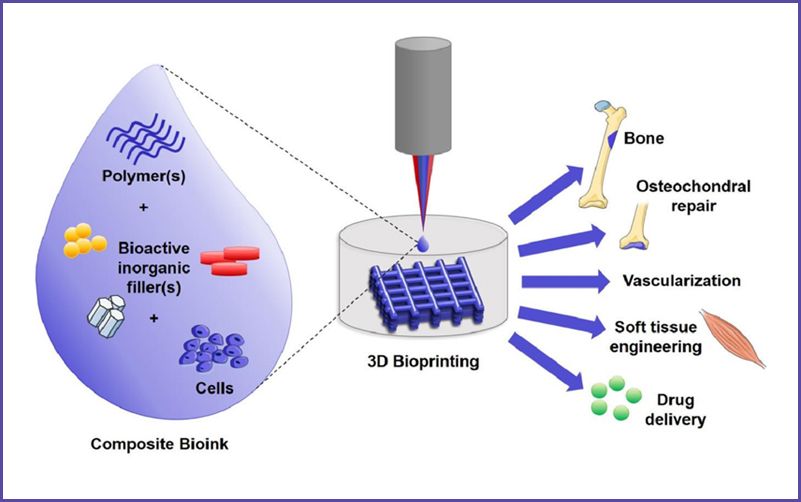
3D Bioprinting Market Size USD9,956.9 Million by 2026: Valuates Reports
06 January 2021: Global 3D Bioprinting market size is projected to reach USD9,956.9 Million by 2026, from USD8,316 Million in 2020, at a CAGR of 18.8% during 2021-2026. Major factors driving the growth of the 3D Bioprinting market size are technological advancements in 3D bioprinters and biomaterials, increasing use of 3D bioprinting in the pharmaceutical and cosmetology industries, and rising public and private funding to support bioprinting research activities. This report provides a detailed quantitative analysis of the current 3D bioprinting market size, trends, and 3D bioprinting market forecast estimations from 2021 to 2026, which assists in identifying the prevailing 3D bioprinting market opportunities.
The 3D bioprinting market size is witnessing an upward spike with the increasing spread of Covid-19. This is attributed to the increasing demand for ventilators and the lack of availability of test kits. Various 3D bioprinting companies are manufacturing respirators and ventilators to overcome the shortage of these devices. The progress of vaccine and drug research has been accelerated by this pandemic, as scientists are using emerging technology to allow safety testing in people. In the meantime, numerous 3D bioprinting companies are focusing on artificial tissue research and development.
Technological advancements in the 3D bioprinting industry are expected to drive the growth of the 3D bioprinting market size. Bioprinting has emerged as a promising technology for the manufacturing of artificial tissues and organs that can revolutionize the diagnosis and treatment of various medical conditions. Bioprinting companies around the world are actively innovating in the fields of regenerative medicine, tissue engineering, and stem cell therapy. Furthermore, increased use of 3D bioprinting in cosmetic surgeries and stem cell research activities is expected to further increase the growth of the 3D bioprinting market size during the forecast period. The large gap between demand and availability of organ transplants signifies a huge requirement amongst the patients and the physicians, and new 3D bioprinting technologies have a strong potential to meet this demand.
3D bioprinters are becoming important in drug testing and clinical trial applications as it drastically reduces the need for animal trials. The United States Food and Drug Administration’s regulatory body has begun to recognize 3D bioprinting as an integrated alternative for determining drug safety and efficacy. This, in turn, is expected to fuel the growth of the 3D bioprinting market size.
www.reports.valuates.com/market-reports/QYRE-Auto-31D1657/global-3d-bioprinting






